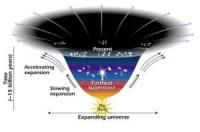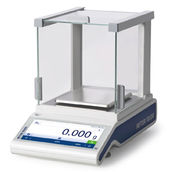How many argon atoms can fit on the surface of a carbon nanotube?
Advertisement
phase transitions are an important part of life in our three-dimensional world. Now a team of scientists has devised a new way to explore how such phase transitions function in less than three dimensions and at the level of just a few atoms. They hope the technique will be useful to test aspects of what until now has been purely theoretical physics, and they hope it also might have practical applications for sensing conditions at very tiny scales, such as in a cell membrane. They worked with single-walled carbon nanotubes, extremely thin, hollow Graphite structures that can be so tiny that they are nearly one-dimensional, to study the phase transition behavior of argon and krypton atoms.
"The physics can be quite different in fewer than three dimensions," said David Cobden, an associate professor of physics at the University of Washington and corresponding author of a paper describing the work in Science .
Phase transitions change the density of atoms. In the vapor form, there are fewer atoms and they are loosely packed. Liquid has more atoms and they are more tightly packed. The solid is a crystal formed of very tightly packed atoms. To determine the phase of the argon and krypton atoms, the researchers used the carbon nanotube much like a guitar string stretched over a fret. A nearby piece of conducting metal applied an electrical force to oscillate the string, and the scientists measured the current to "listen" as the vibration frequency changed – a greater mass of atoms sticking to the nanotube surface produced a lower frequency.
"You listen to this nano guitar and as the pitch goes down you know there are more atoms sticking to the surface," Cobden said. "In principle you can hear one atom landing on the tube – it's that sensitive."
The researchers also found that the nanotube's electrical resistance changed when krypton atoms stuck to the surface.
In the future, the scientists hope to be able to see how the atoms, as they populate the carbon nanotube, react to each other through various phase transitions, and also how they interact with the pure carbon graphite of the nanotube. They expect to see some significant differences in experiments approaching one dimension from those in two or three dimensions.
"For example, matter can freeze in 3-D and in 2-D, but theoretically it should not freeze in 1-D," Cobden said.
Most read news
Other news from the department science
These products might interest you

Get the chemical industry in your inbox
By submitting this form you agree that LUMITOS AG will send you the newsletter(s) selected above by email. Your data will not be passed on to third parties. Your data will be stored and processed in accordance with our data protection regulations. LUMITOS may contact you by email for the purpose of advertising or market and opinion surveys. You can revoke your consent at any time without giving reasons to LUMITOS AG, Ernst-Augustin-Str. 2, 12489 Berlin, Germany or by e-mail at revoke@lumitos.com with effect for the future. In addition, each email contains a link to unsubscribe from the corresponding newsletter.
































































